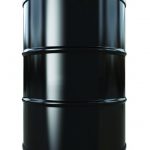Acid Stimulation: 101
Stimulation is performed on a well to increase or restore production. Sometimes, a well initially exhibits low permeability, and stimulation is employed to commence production from the reservoir. Other times, stimulation is used to further encourage permeability and flow from an already existing well that has become under-productive.
A type of stimulation treatment, acidizing is performed below the reservoir fracture pressure in an effort to restore the natural permeability of the reservoir rock. Well acidizing is achieved by pumping acid into the well to dissolve limestone, dolomite and calcite cement between the sediment grains of the reservoir rocks. There are two types of acid treatment: matrix acidizing and fracture acidizing.
A matrix acid job is performed when acid is pumped into the well and into the pores of the reservoir rocks. In this form of acidization, the acids dissolve the sediments and mud solids that are inhibiting the permeability of the rock, enlarging the natural pores of the reservoir and stimulating flow of hydrocarbons.
While matrix acidizing is done at a low enough pressure to keep from fracturing the reservoir rock, fracture acidizing involves pumping highly pressurized acid into the well, physically fracturing the reservoir rock and dissolving the permeability inhibitive sediments. This type of acid job forms channels through which the hydrocarbons can flow.
There are different acids used to perform an acid job on wells. A common type of acid employed on wells to stimulate production is hydrochloric acids (HCI), which are useful in removing carbonate reservoirs, or limestones and dolomites, from the rock. Also, HCI can be combined with a mud acid, or hydrofluoric acid (HF), and used to dissolve quartz, sand and clay from the reservoir rocks.
In order to protect the integrity of the already completed well, inhibitor additives are introduced to the well to prohibit the acid from breaking down the steel casing in the well. Also, a sequestering agent can be added to block the formation of gels or precipitate of iron, which can clog the reservoir pores during an acid job.
After an acid job is performed, the used acid and sediments removed from the reservoir are washed out of the well in a process called back flush.
article credit: rigzone.com


